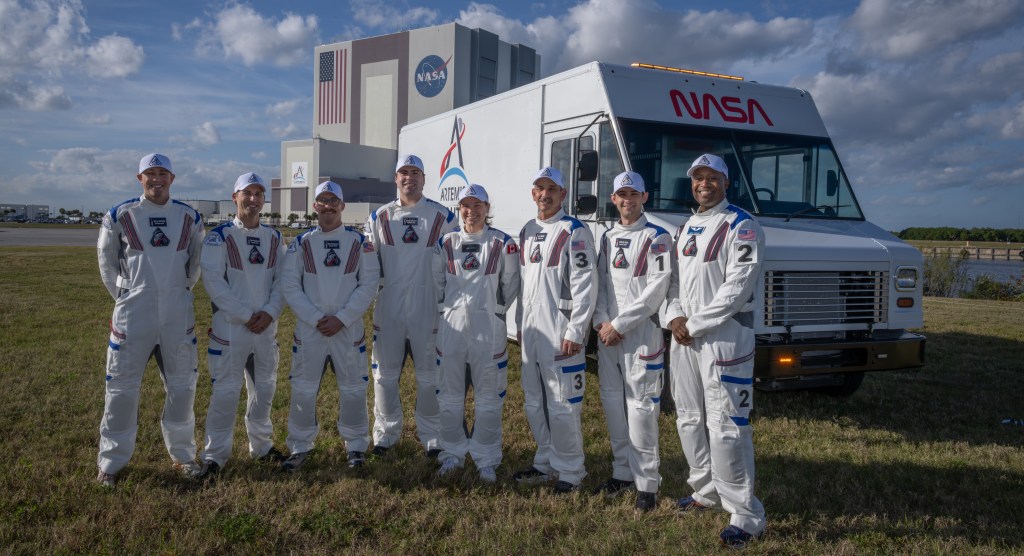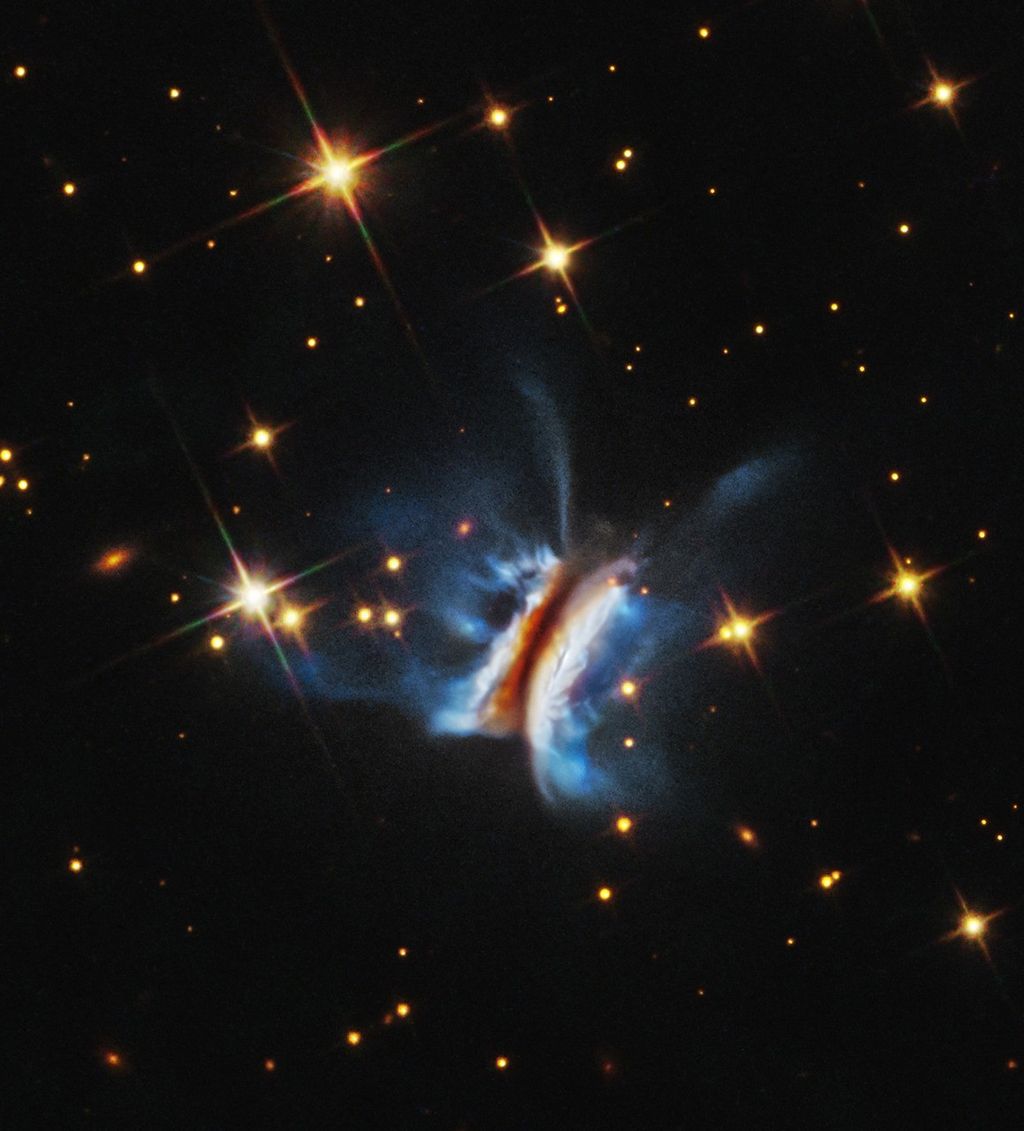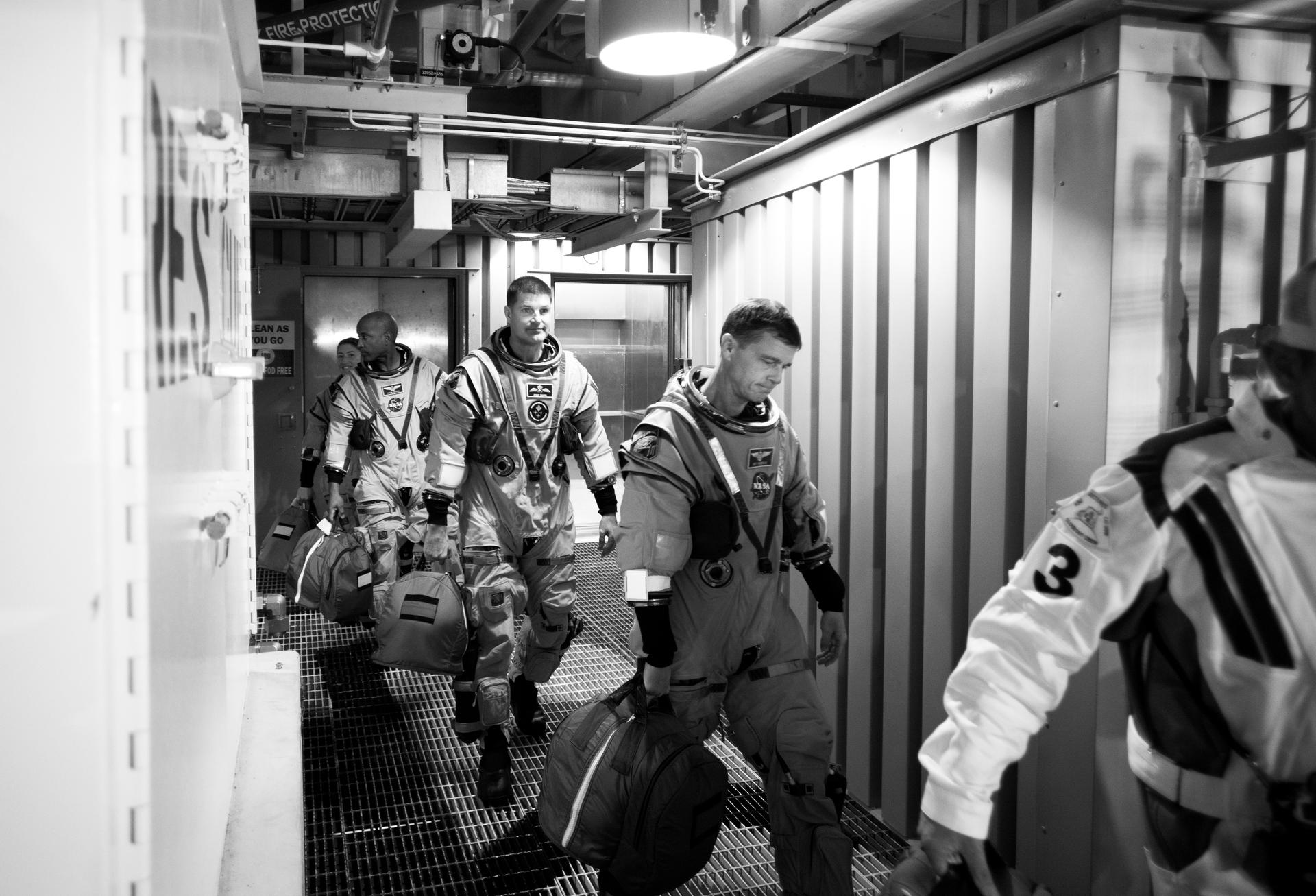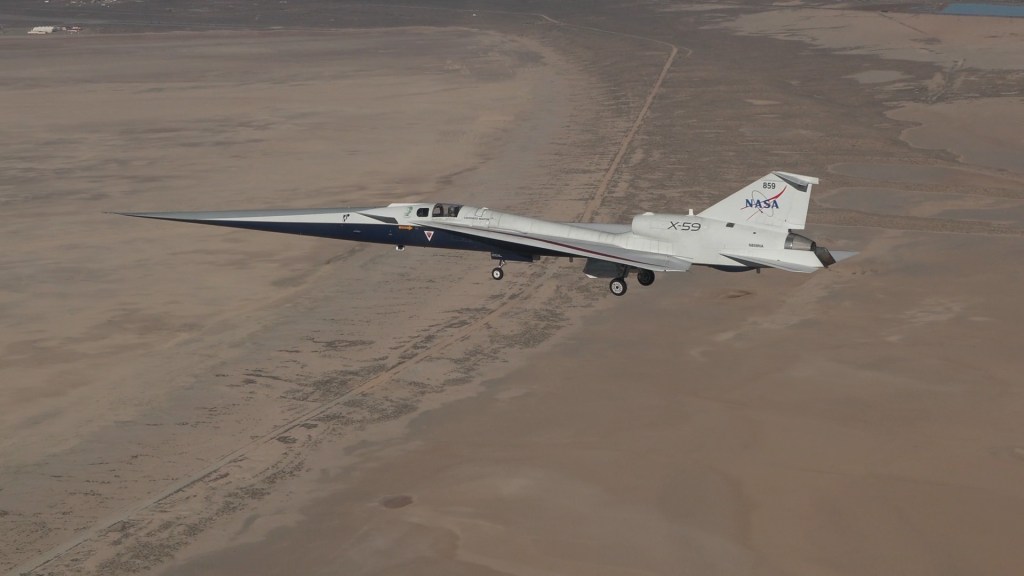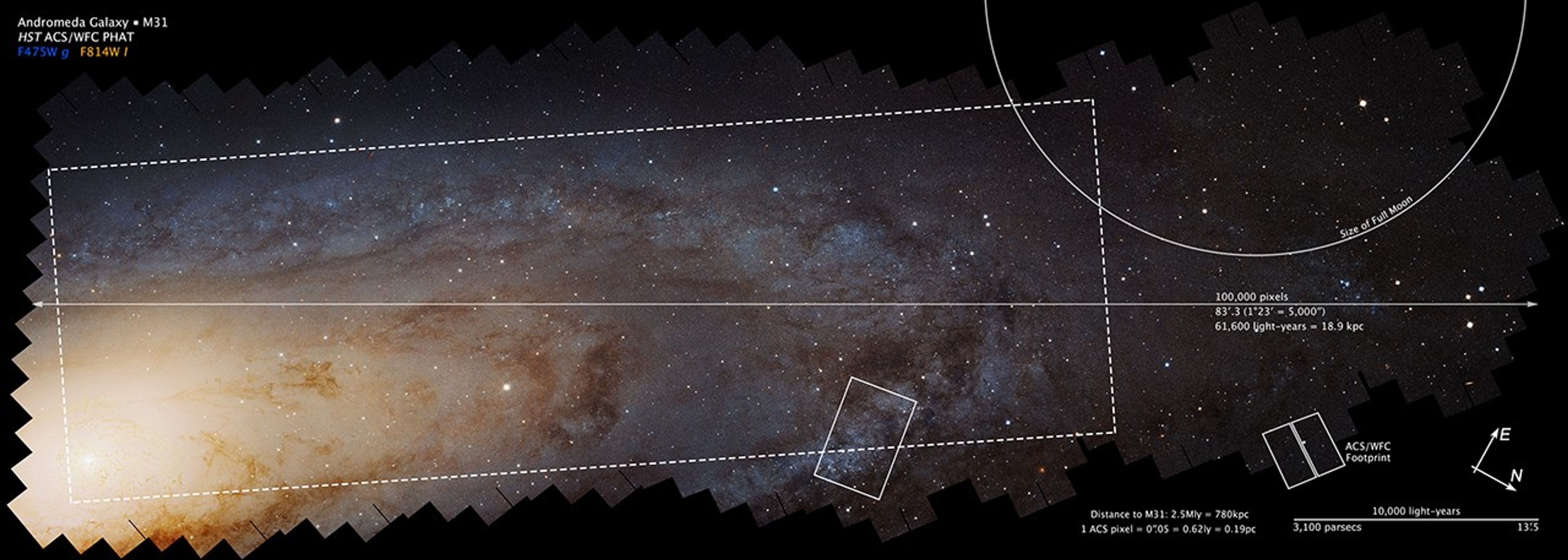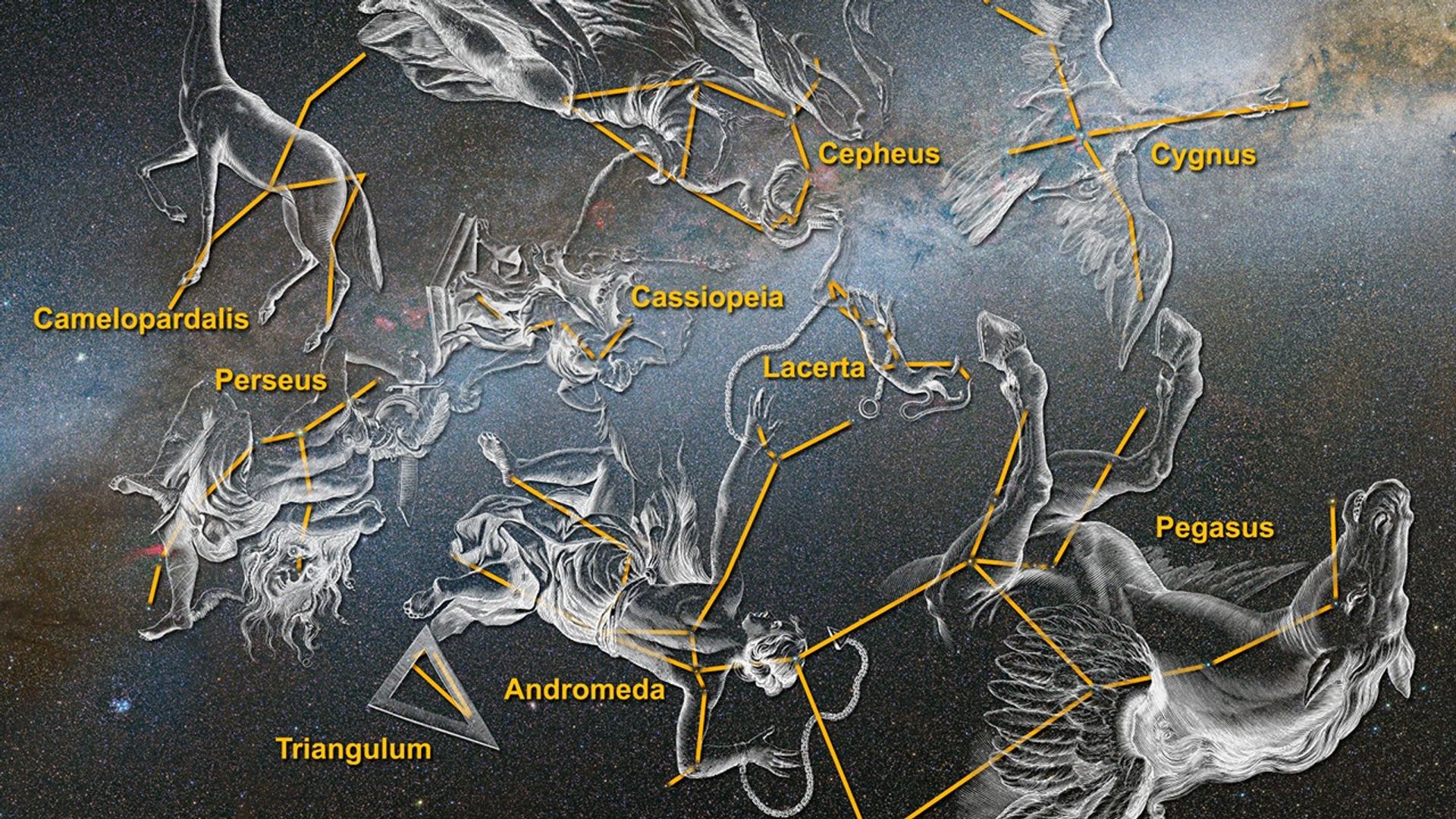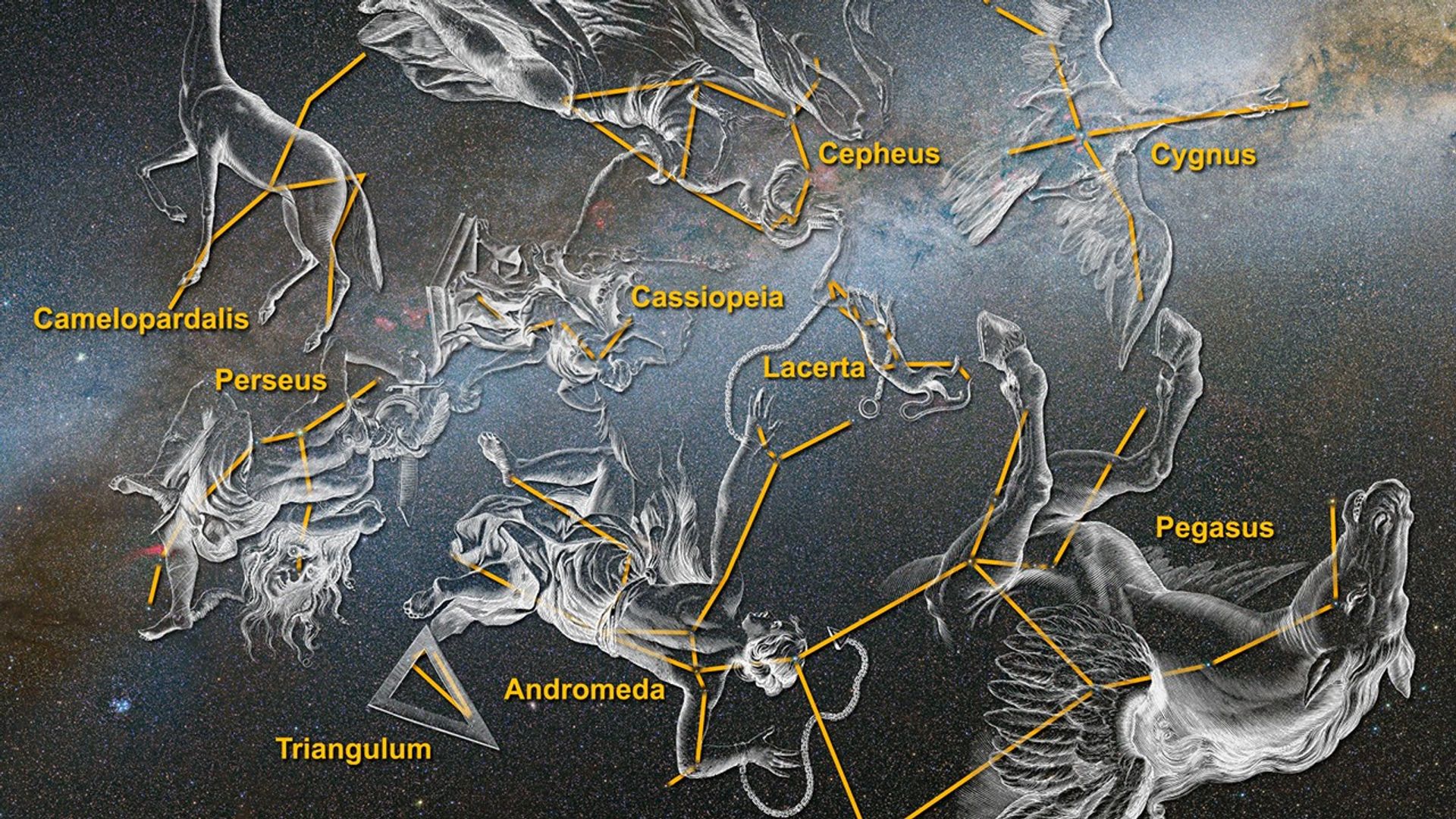1 min read
Hubble M31 PHAT Mosaic (Uncropped)

Editor's Note
On January 16, 2025, Hubble expanded on this mosaic with an even larger version, available here: NASA’s Hubble Traces Hidden History of Andromeda Galaxy.
The largest NASA Hubble Space Telescope image ever assembled, this sweeping bird's-eye view of a portion of the Andromeda galaxy (M31) is the sharpest large composite image ever taken of our galactic next-door neighbor. Though the galaxy is over 2 million light-years away, the Hubble telescope is powerful enough to resolve individual stars in the 61,000-light-year-long stretch of the galaxy's pancake-shaped disk seen here. It's like photographing a beach and resolving individual grains of sand. And, Hubble astronomers see lots of stars in this sweeping view – over 100 million, with some of them in thousands of star clusters seen embedded in the disk.
Hubble traces densely packed stars extending from the innermost hub of the galaxy seen at left. Moving out from this central galactic bulge, the panorama sweeps from the galaxy's central bulge across lanes of stars and dust to the sparser outer disk. Large groups of young blue stars indicate the locations of star clusters and star-forming regions. The stars bunch up in the blue ring-like feature toward the right side of the image. The dark silhouettes trace out complex dust structures. Underlying the entire galaxy is a smooth distribution of cooler red stars that trace Andromeda's evolution over billions of years.
Because the galaxy is only 2.5 million light-years from Earth, it is a much bigger target in the sky than the myriad galaxies Hubble routinely photographs that are billions of light-years away. This means that the Hubble survey consists of 7,398 exposures taken over 411 individual pointings and assembled together into a mosaic image. The edges of the mosaic form a sawtooth pattern created by stitching together the multiple fields.
The panorama is the product of the Panchromatic Hubble Andromeda Treasury (PHAT) program. Images were obtained from viewing the galaxy in near-ultraviolet, visible, and near-infrared wavelengths, using the Advanced Camera for Surveys and the Wide Field Camera 3 aboard Hubble. This view shows the galaxy in its natural visible-light color, as photographed with the Advanced Camera for Surveys in red and blue filters July 2010 through October 2013.
The panorama is being presented at the 225th Meeting of the Astronomical Society in Seattle, Washington.
About the Object
- R.A. PositionR.A. PositionRight ascension – analogous to longitude – is one component of an object's position.00h 42m
- Dec. PositionDec. PositionDeclination – analogous to latitude – is one component of an object's position.+41° 15'
- ConstellationConstellationOne of 88 recognized regions of the celestial sphere in which the object appears.Andromeda
- DistanceDistanceThe physical distance from Earth to the astronomical object. Distances within our solar system are usually measured in Astronomical Units (AU). Distances between stars are usually measured in light-years. Interstellar distances can also be measured in parsecs.2.5 million light-years (0.8 megaparsecs)
About the Data
- Data DescriptionData DescriptionProposal: A description of the observations, their scientific justification, and the links to the data available in the science archive.
Science Team: The astronomers who planned the observations and analyzed the data. "PI" refers to the Principal Investigator. - InstrumentInstrumentThe science instrument used to produce the data.HST>ACS
- Exposure DatesExposure DatesThe date(s) that the telescope made its observations and the total exposure time.July 2010 - October 2013, Total Exposure Time: 394 hours (16.1 days)
- FiltersFiltersThe camera filters that were used in the science observations.F475W (g) and F814W (I)
- Object NameObject NameA name or catalog number that astronomers use to identify an astronomical object.M31, Andromeda Galaxy, NGC 224
- Object DescriptionObject DescriptionThe type of astronomical object.Spiral Galaxy
- Release DateJanuary 5, 2015
- Science ReleaseHubble’s High-Definition Panoramic View of the Andromeda Galaxy
- Credit

This image is a composite of separate exposures acquired by the ACS instrument on the Hubble Space Telescope. Several filters were used to sample broad wavelength ranges. The color results from assigning different hues (colors) to each monochromatic (grayscale) image associated with an individual filter. In this case, the assigned colors are: Blue: F475W (g) Yellow: F814W (I)

Related Images & Videos

Hubble M31 PHAT Mosaic
The largest NASA Hubble Space Telescope image ever assembled, this sweeping bird's-eye view of a portion of the Andromeda galaxy (M31) is the sharpest large composite image ever taken of our galactic next-door neighbor. Though the galaxy is over 2 million light-years away, the...
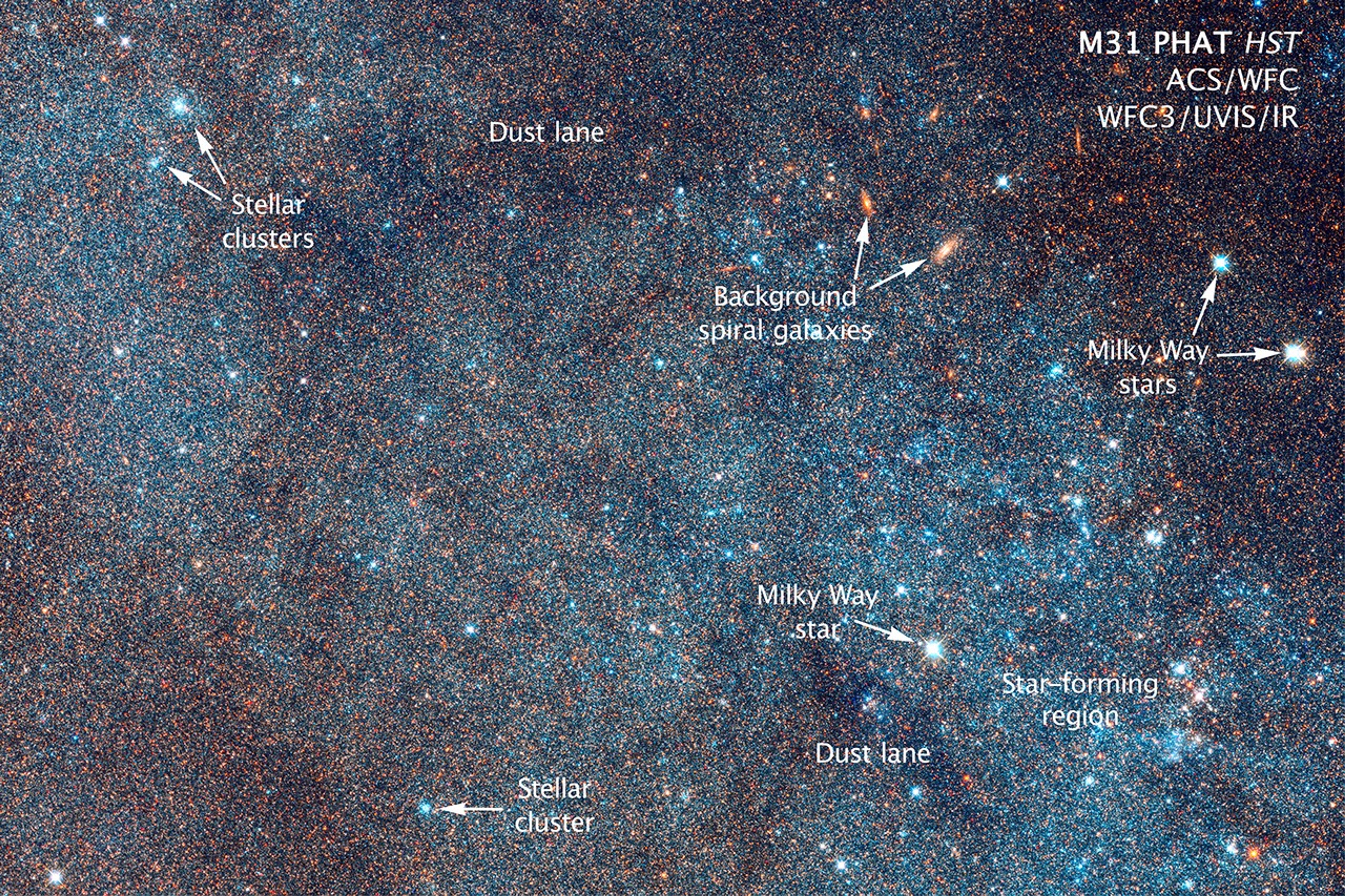
Annotated Close-up of Andromeda
In this detailed image of the Hubble Space Telescope M31 PHAT mosaic image, several object types are labeled, including dust lanes, stellar clusters, Milky Way stars, and star-forming regions. This image is a small section of the full mosaic that includes near-ultraviolet,...
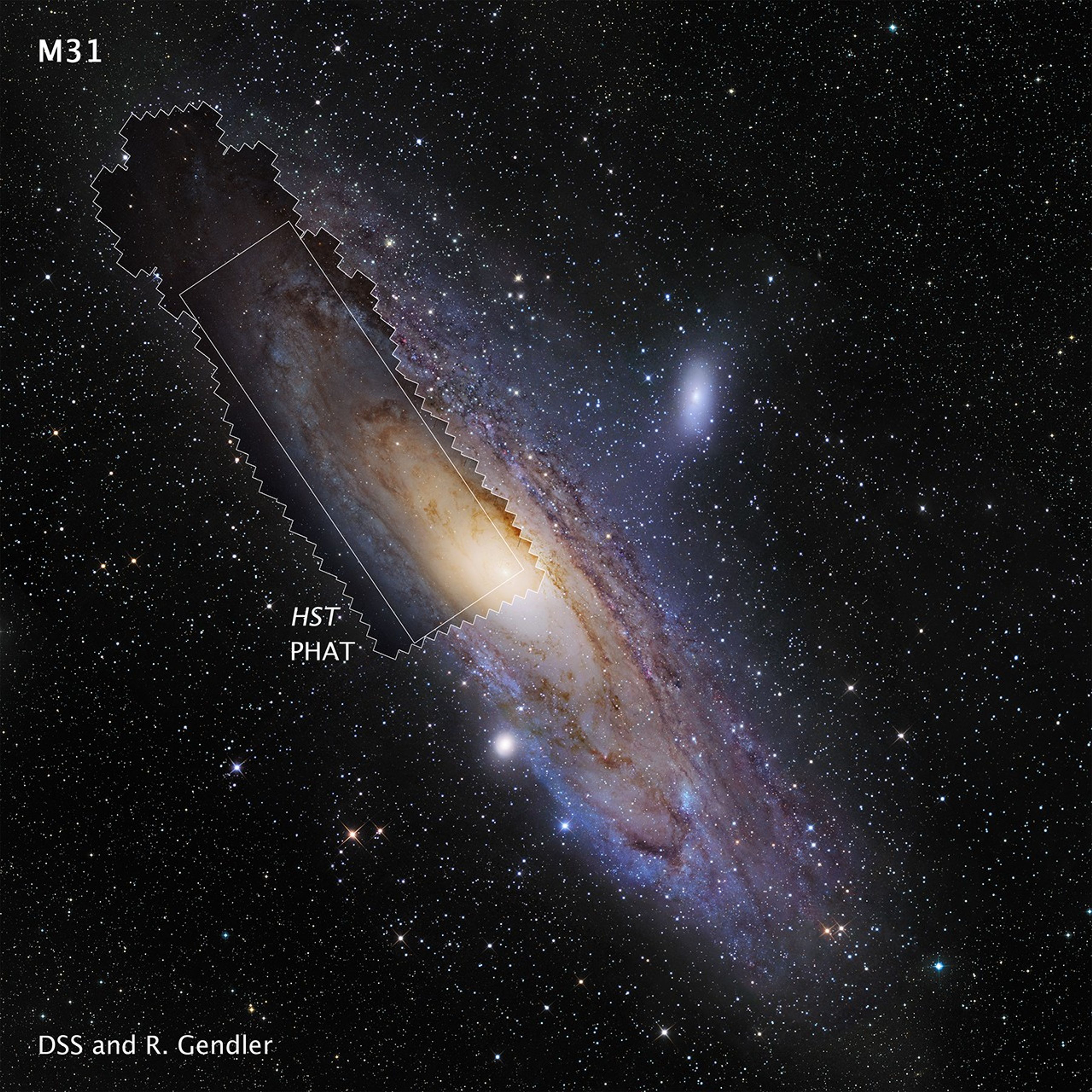
Hubble M31 PHAT Mosaic in Ground-based Image of M31
The Hubble Space Telescope M31 PHAT mosaic image is shown in context with a ground-based image of galaxy M31. The background image, taken by Robert Gendler, was made by compositing M31 data from a 12.5-inch Ritchey-Chretien telescope with M31 data from the Digitized Sky Survey.
Share
Details
Claire Andreoli
NASA’s Goddard Space Flight Center
Greenbelt, Maryland
claire.andreoli@nasa.gov


